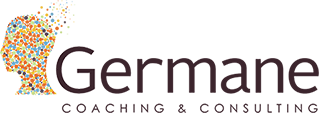Leaders in a rapidly changing global environment are challenged to guide their organizations towards what seems an unpredictable future. The forces that create that future, however are emerging now and can be discerned. Leaders can avoid being victims of what is to come and instead exert more influence over the future by employing a systematic approach to strategic planning.
There are three approaches to preparing for what lies ahead. The first relies on the hope that the resources you have today will be adequate to meet future circumstances. The second involves speculating about the future but engaging in little or no preparatory actions. This may result in a faster response after the fact and possibly some damage control. The third method involves analyzing the external environment in which the company operates; examining the current forces affecting the future of that environment; and identifying the best possible responses to these forces. Leaders who use this approach see the forces at play now, be they changes in demographics, customer base, competition or technologies. They find ways to engage these forces and bring about a future that benefits the company.
A five step approach to strategic planning is elaborated in this article.
Step 1 – Identify Key Constituents
Step 2 – Determine Critical Forces
Step 3 – Describe Desired Outcomes
Step 4 – Discover Opportunities and Threats
Step 5 – Develop Strategic Initiatives
Strategic Planning Process: An Open Systems Approach
Several principles of open systems theory inform this process:
- The organization affects and is affected by dynamic forces of the external environment
- The future is co-created by current forces and the patterns of responses to them
- The organization’s response to these forces determine its future
Step 1 – Identify Key Constituents
Identify constituents who provide input to and/or receive output from the company. Customers, vendors, the pool of potential employees, educational institutions, investors, and others receive output from the organization in the form of products, services, financial returns, payments, involvement in the community, etc. They also provide input to the organization in the form of demands, raw materials, labor, monetary investments, etc.
Step 2 – Determine Critical Forces
Next identify major forces that influence constituents’ future behavior relative to the company. What do you know about these forces? How is the direction, strength, and trajectory likely to change over the next 5-10 years? Explore questions such as what age segment of the population is growing? What is shaping the developing preferences of these future customers and employees?
For example the automotive industry’s business in the U.S. will be affected by slow overall population growth and an increase in the 50 plus age group. At the same time there will be tremendous population growth and economic development in India and China. To remain healthy, American auto makers must account for the shifting preferences resulting from such changes in their customer base. Other factors including scarcity and rising cost of fossil fuels will affect the automotive industry. It is a matter of survival to develop strategies now to deal with forces that are determining the future.
Consider Fit First, a company that designs and produces exercise equipment. Ten years ago they foresaw significant growth of the retirement aged population. Prevailing forces indicated that these retirees would live longer, have more disposable income and remain active for more years than previous generations. Fit First prepared for these changes in advance by developing products, services, packaging and delivery mechanisms to take advantage of market growth in this segment.
Step 3 – Describe Desired Outcomes
What would you like to see from each and all constituents in the next 5-10 years? You may want future employees to include at least one third of the top 3% of graduates from the best engineering programs. Perhaps in 10 years you want the 20-40 year olds in India to buy your cars to replace the two wheel technology they grew up with. Imagine the long term outcomes of being the first and primary company to convert this entire generation to the automobile!
Step 4 – Discover Opportunities and Threats
Articulate the company’s core strengths by examining questions such as:
- What is our competitive edge? What core expertise and talent accounts for our competitive edge?
- What do we have or do that attracts customers and constituents? What perspectives, knowledge, expertise and resources do we use to do so?
Next discover the areas of future opportunities and threats. The least costly opportunities for creating the desired future are to be discovered at the intersection of the key forces, desired outcomes and core strengths. The threats and more costly opportunities lie in the area defined by desired outcomes, key forces, and competencies the company does not have.
Why? It is costly, time consuming and difficult to transform the key strengths of a company. For example, consider the air travel industry. Economic and social forces are creating demand for travel to exotic places by some market segments. If an airline’s key strength is on time departures and arrivals to major cities, it will be hard pressed to transform itself to become the premiere provider of flights to exotic places utilized by a small number of high end travelers. This requires a different culture, attitude and core strengths and that degree of transformation takes more time, effort and investment.
Sometimes, however, the future is changing so dramatically that the company must transform to survive. Disruptive technologies create such change. When the forces of technology and a growing economy made air travel more accessible, the railroad industry could have seized the opportunity by becoming a provider of long distance transportation, rather than remaining a mover of rail cars. Such shifts in identity are not typically seen, because they exist outside the current way of thinking. Involving those who “think outside the box” enables leaders to consider ideas beyond their current reality and invest in changes needed to compete in that new reality.
Step 5 – Developing Strategic Initiatives
To generate ideas about “what to do” engage creative thinkers, innovators, and people who dream big ideas. Choose which concepts to pursue and charter the right people to develop selected initiatives, recommending changes to the company as needed. For example Fit Plus studied the lifestyle preferences of baby boomer retirees. Where would they live, in what type of housing? Where would they want to exercise? What physical aspects of aging would determine equipment features, packaging and delivery? In another example, a local employer decides to focus on the deteriorating public schools that are affecting the pool of future employees. They create a private/public partnership with other companies in the area to make long term improvements in public education.
Avoid The Biggest Strategic Mistakes
Involving outsiders in strategy development is key. Engage those with expertise in strategic planning, systems thinking, and from disciplines outside the core expertise of the company. By doing so, leaders avoid the biggest hidden error of strategy development – unknowingly employing a paradigm that distorts perceptions of what is happening now and what is possible in the future. Our operating paradigms or models determine, to a great degree, the strategies that will emerge. These models are not typically part of the conversation about strategy. “Insiders” share the same paradigm so no one see it. In addition, the company’s past success is build on this unseen paradigm. An outsider with a different view is more likely to see and be free to name the group’s operating assumptions and models.
Consider the following example. A country needs to gain access to a larger share of resources in order to continue its development. They operate from a paradigm that the world is flat. Sailing east across the Atlantic Ocean, therefore, will result in falling off the end of the earth. As such, expanded resources can only be won by moving west. All the resources to the west are controlled by legitimate governments. So they rely on diplomatic strategies to help them gain favor with these countries. A different paradigm, the world is round, enables a different strategy – discovery of resources not yet controlled by any government. As a result, they use their resources for travel and exploration. This strategy relies on different core talent – navigation and sailing versus diplomacy. They must also become a culture that takes risks in order to take advantage of this new approach.
Strategy development allows the corporation to plan for the future and remain healthy in a fast-paced ever changing environment. Using a systematic process and involving outside expertise is key to developing sound strategies. Leaders must also create a plan to implement the strategy that includes learning and adjusting along the way.

